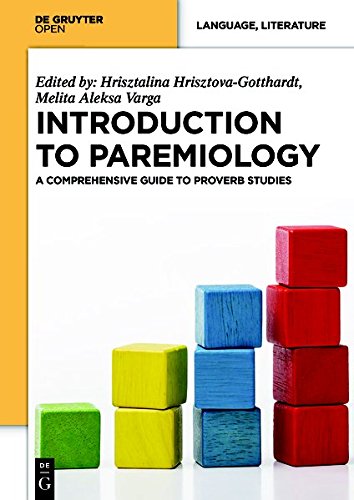
Introduction to Paremiology: A Comprehensive Guide to Proverb Studies
Publisher: De Gruyter Open 2015
ISBN-13: 9783110410167
Number of pages: 382
Description:
This handbook introduces key elements of the philological research area called paremiology (the study of proverbs). It presents the main subject area as well as the current status of paremiological research. The basic notions, among others, include defining proverbs, main proverb features, origin, collecting and categorization of proverbs.
Download or read it online for free here:
Download link
(multiple PDF files)
Similar books
 Creative Multilingualism: A Manifesto
Creative Multilingualism: A Manifestoby Katrin Kohl, et al. - Open Book Publishers
This book is a contribution to the field of modern languages, highlighting the relationship between multilingualism and creativity, and, crucially, reaching beyond an Anglo-centric view of the world. Intended to spark further research and discussion.
(3654 views)
 Lectures on The Science of Language
Lectures on The Science of Languageby Max Mueller - Charles Scribner
The book should attract the attention, not only of the scholar, but of the philosopher, the historian, and the theologian, to a science which concerns them all, and which teaches us that there is more in words than is dreamt of in our philosophy.
(14767 views)
 English Synonyms and Antonyms
English Synonyms and Antonymsby James Champlin Fernald - ManyBooks
Practical and invaluable guide to clear and precise diction for writers, speakers, students, business and professional men. With notes on the correct use of prepositions; designed as a companion for the study and as a textbook for the use of schools.
(34426 views)
 An Introduction to Applicative Universal Grammar
An Introduction to Applicative Universal Grammarby Bernard Paul Sypniewski - Rowan University
This monograph was written to make it easier for those curious about AUG to understand this interesting linguistic theory. Topics: A description of the semiotic theory of language; Phonology; Genotype Grammar; Phenotype Grammar; and Methodology.
(14856 views)